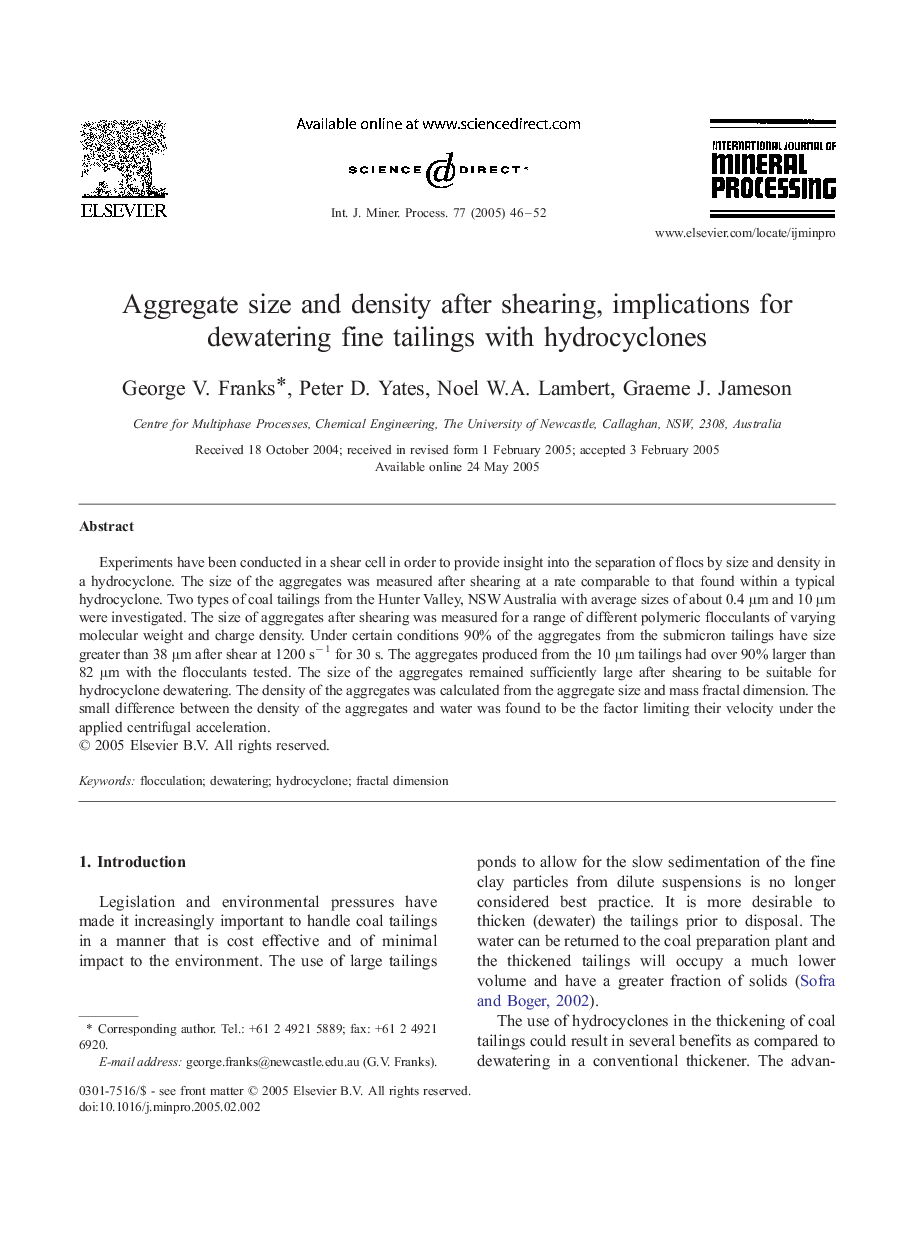| Article ID | Journal | Published Year | Pages | File Type |
|---|---|---|---|---|
| 9633020 | International Journal of Mineral Processing | 2005 | 7 Pages |
Abstract
Experiments have been conducted in a shear cell in order to provide insight into the separation of flocs by size and density in a hydrocyclone. The size of the aggregates was measured after shearing at a rate comparable to that found within a typical hydrocyclone. Two types of coal tailings from the Hunter Valley, NSW Australia with average sizes of about 0.4 μm and 10 μm were investigated. The size of aggregates after shearing was measured for a range of different polymeric flocculants of varying molecular weight and charge density. Under certain conditions 90% of the aggregates from the submicron tailings have size greater than 38 μm after shear at 1200 sâ 1 for 30 s. The aggregates produced from the 10 μm tailings had over 90% larger than 82 μm with the flocculants tested. The size of the aggregates remained sufficiently large after shearing to be suitable for hydrocyclone dewatering. The density of the aggregates was calculated from the aggregate size and mass fractal dimension. The small difference between the density of the aggregates and water was found to be the factor limiting their velocity under the applied centrifugal acceleration.
Related Topics
Physical Sciences and Engineering
Chemical Engineering
Chemical Engineering (General)
Authors
George V. Franks, Peter D. Yates, Noel W.A. Lambert, Graeme J. Jameson,
